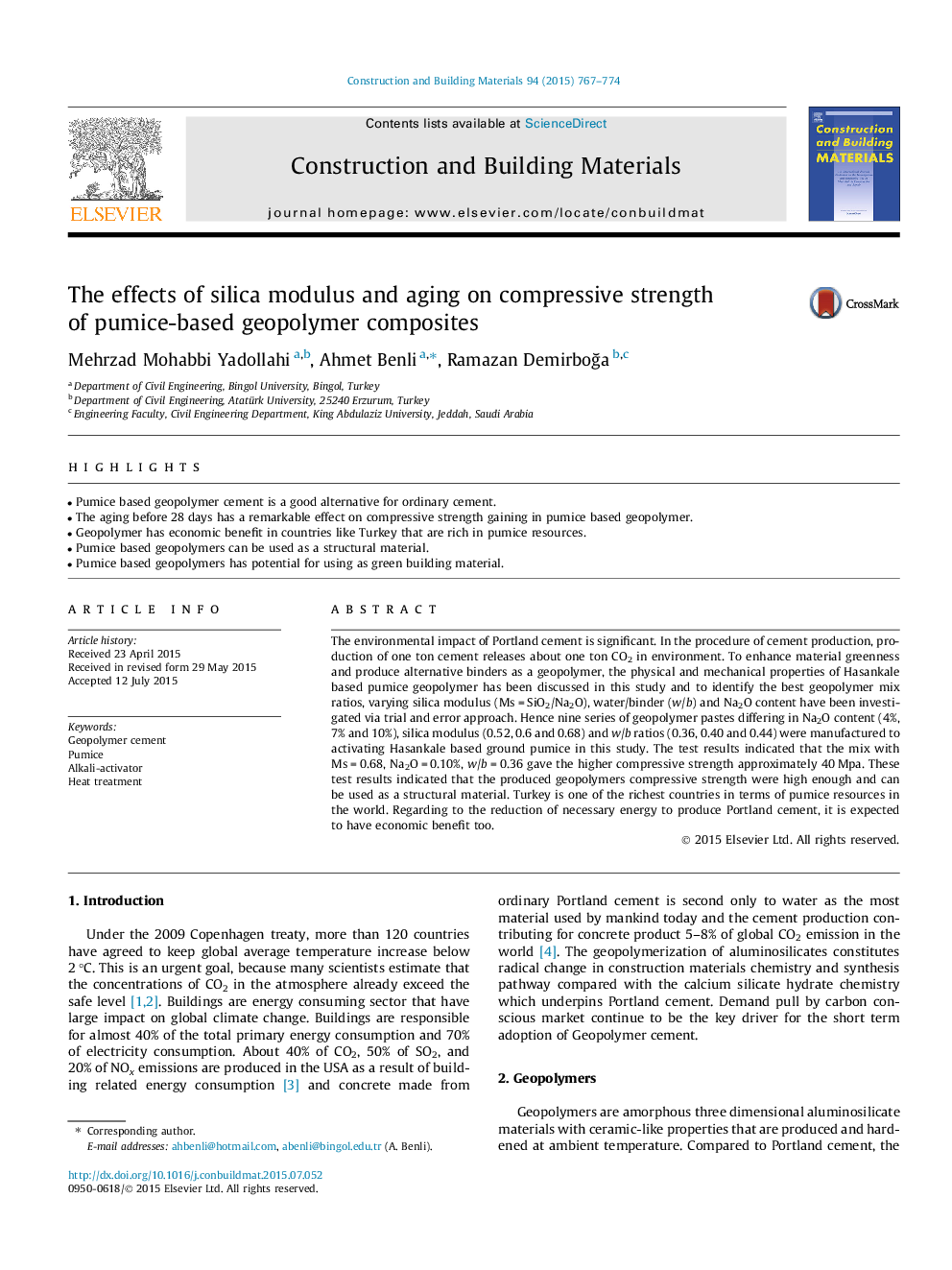| Article ID | Journal | Published Year | Pages | File Type |
|---|---|---|---|---|
| 6720750 | Construction and Building Materials | 2015 | 8 Pages |
Abstract
The environmental impact of Portland cement is significant. In the procedure of cement production, production of one ton cement releases about one ton CO2 in environment. To enhance material greenness and produce alternative binders as a geopolymer, the physical and mechanical properties of Hasankale based pumice geopolymer has been discussed in this study and to identify the best geopolymer mix ratios, varying silica modulus (Ms = SiO2/Na2O), water/binder (w/b) and Na2O content have been investigated via trial and error approach. Hence nine series of geopolymer pastes differing in Na2O content (4%, 7% and 10%), silica modulus (0.52, 0.6 and 0.68) and w/b ratios (0.36, 0.40 and 0.44) were manufactured to activating Hasankale based ground pumice in this study. The test results indicated that the mix with Ms = 0.68, Na2O = 0.10%, w/b = 0.36 gave the higher compressive strength approximately 40 Mpa. These test results indicated that the produced geopolymers compressive strength were high enough and can be used as a structural material. Turkey is one of the richest countries in terms of pumice resources in the world. Regarding to the reduction of necessary energy to produce Portland cement, it is expected to have economic benefit too.
Related Topics
Physical Sciences and Engineering
Engineering
Civil and Structural Engineering
Authors
Mehrzad Mohabbi Yadollahi, Ahmet Benli, Ramazan DemirboÄa,
